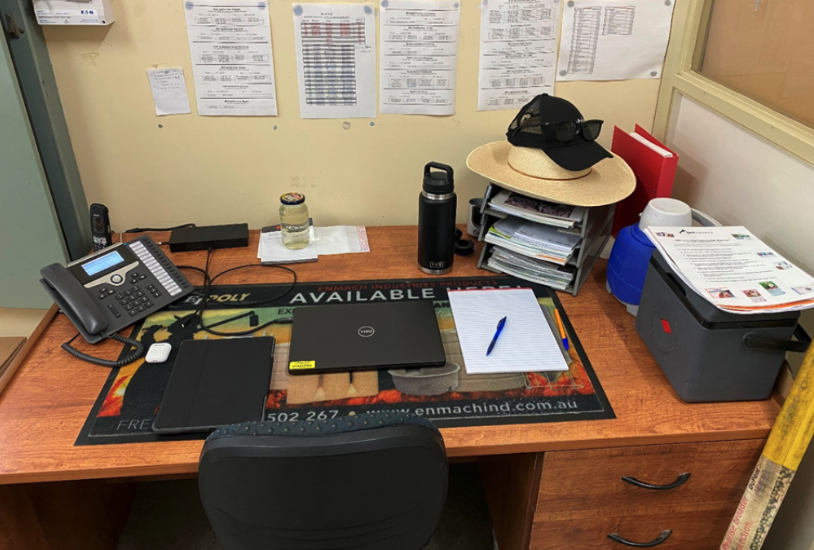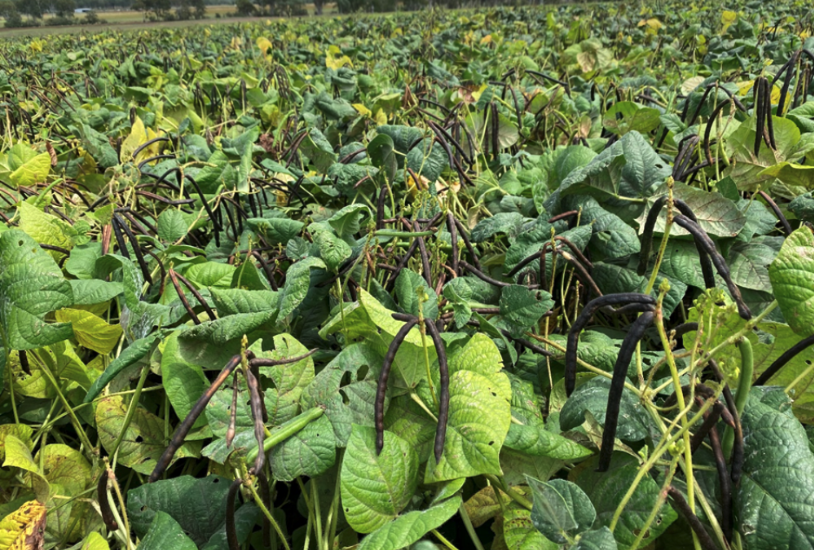5.45 AM
My alarm goes off and I get up and go for an early morning run or bike ride. Usually for about 45 minutes.
6.45 AM
I get back home, have a shower and start getting ready for the day. I have some Weet-Bix or muesli then pack my lunch and fill my drink bottle, making sure I had enough food and water to last me the day.
7.45 AM
I am lucky enough to live about a 5-minute walk from work and I like to leave with enough time to get to work about 10 minutes early. I have found walking to and from work is a good way to start and finish the day, helping create a good work/life balance.
7.50 AM
When I get to work, the first thing I usually do is make sure the shop is open, gates, and roller doors are open, the lights are on, and the till is full. After this I will sit down and write out a plan for the day and what growers I will check, additionally I will finalise any reports/recommendations leftover from the previous day. Then I sit down with my mentor agronomist and go through the previous day’s crop checks, discuss what crops we will check today and plan out the rest of the week. Because we are working with clients, our schedules often change, we go over the week’s plan every day and sometimes next week’s plan to ensure we cover every client. I often use this time to send away any soil or water tests.

8.30 AM
Depending on the day, I will either be with my mentor agro or I will be by myself. At the start of my grad program, we would always check crops together until I found my feet, learnt more about the crops and earned the trust of my mentor and senior agronomist. Summer is our busy season here in Southeast QLD so we spend most of our time in the paddock checking crops. Currently, we have been checking predominantly cotton and mung beans with some other soybean, sorghum and peanut crops. Ideally, we check cotton once or twice a week and mung beans once a week. This allows us to keep on top of the crop and allow us to make timely decisions if needed.

Checking the crops involves using a tarpaulin sheet, called a beat sheet, and a poll to beat the plant against the sheet to knock any insects out of the plant and onto the sheet. This allows us to identify the insects and count their numbers. I will repeat this multiple times, depending on the paddock size. This allows us to calculate thresholds to determine if it is economically viable to take action.
12.30 PM
Around this time, I will usually pull up for lunch. If I have a full day checking crops I will pull up under a tree or near a creek and eat lunch. If it is a quieter day I may come back to the shop to have lunch and send some crop reports or other emails.
1.00 PM
Typically, I will head back to the shop so I can write up crop reports/recommendations and send them through to the growers. Most of the time I can write all the reports and get them sent by 5.00 pm before I finish for the day. Sometimes, if I have checked lots of crops during the day and haven’t got enough time to get every report written, I may take some time at home after work to get the reports written. Why would I do that after work hours instead of the next morning? What we do as agronomists directly impacts our clients and if a client needs to spray a paddock I would rather they have the report ready for the next day. I have found it also frees up the next morning and leads to a more productive day. After all, I want to do well and develop in my field, so I am willing to put in some extra effort to make it happen.
5.15 PM
I get home from work and will try to do some work around the yard, cook dinner, and unwind from the day by watching some TV or reading a book.
Some other cool things I get to do often as part of my job include travelling to other towns such as Maryborough (30min inland near Fraser Island) and Mundubbera, both 2 hours away from the shop, once a week to check cotton. This is a fantastic opportunity to see how cotton grows in different areas and climatic conditions, such as near the coast. Travelling around also gives me the chance to see other crops grown in these areas such as pineapples and sugar cane.
Thinking of experiencing life as a Nutrien Ag Solutions Graduate? Sign up to GradAustralia to receive job alerts for Nutrien Ag Solutions.

